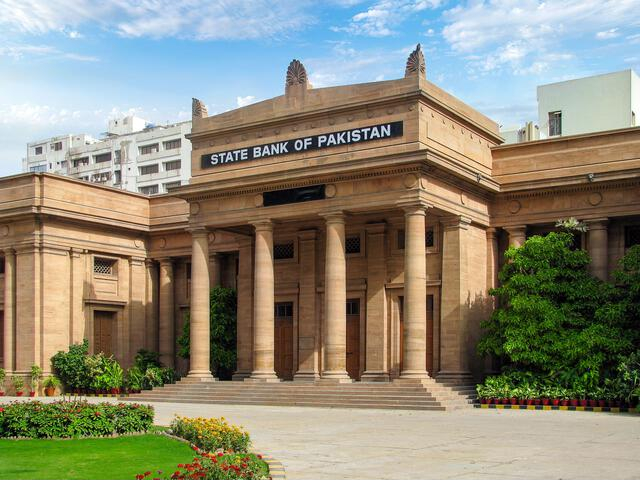KARACHI: Pakistan’s central bank warned Monday that the country’s medium-term economic outlook faces risks due to global trade disruptions and commodity price volatility triggered by U.S. President Donald Trump’s imposition of tariffs.
In its half-yearly report for FY25, the State Bank of Pakistan (SBP) said the resurgence of protectionist trade policies, particularly Washington’s decision to enforce a 10% blanket duty and a 145% tariff on China, is beginning to impact key trading partners and global economic dynamics. These measures, the report noted, could disrupt trade flows, weigh on emerging markets’ exports and remittances, and create pressure on international commodity prices.
“The macroeconomic outlook is contingent on how the global economic and political environment shapes up,” the report said.
“In this context, there are three prominent risks. First, the recent shift towards more protectionist trade policies has already begun to take effect. These tariffs are impacting geopolitical contenders and key trading partners. Rising tariffs could disrupt trade and economic activity, having implications for EMDEs’ [emerging market and developing economies] exports and remittances and international commodity prices.”
The report further highlighted additional risks, including the spillovers of ongoing geopolitical conflicts and a potential resurgence in global inflation due to tariffs and supply-chain constraints. These developments could tighten global financial conditions, negatively affecting emerging economies such as Pakistan.
Despite the risks, the SBP noted that Pakistan’s macroeconomic indicators showed improvement in the first half of the fiscal year, with inflation declining, the current account moving into surplus, and the fiscal deficit contained to its lowest level since FY2005. These improvements were supported by calibrated monetary policy, fiscal consolidation, stable commodity prices, and the approval of the IMF’s Extended Fund Facility program.
The SBP projects GDP growth between 2.5% and 3.5% for FY25. However, the IMF last week downgraded Pakistan’s growth forecast from 3.0% to 2.6%, citing trade-related uncertainties. Inflation for the fiscal year is expected to average between 5.5% and 7.5%, while the current account balance is forecast to range from -0.5% to 0.5% of GDP.
The central bank said it has built foreign exchange reserves to $10.21 billion and aims to raise that to $14 billion by June 2025. SBP Governor Jameel Ahmad recently stated at the IMF-World Bank Spring Meetings in Washington that Pakistan’s economy is gradually recovering and is on track to grow around 3.0% this fiscal year.
The report underscored the need to address structural constraints, noting that weak growth in labor and total factor productivity continues to undermine Pakistan’s economic competitiveness and contributes to cyclical volatility.




